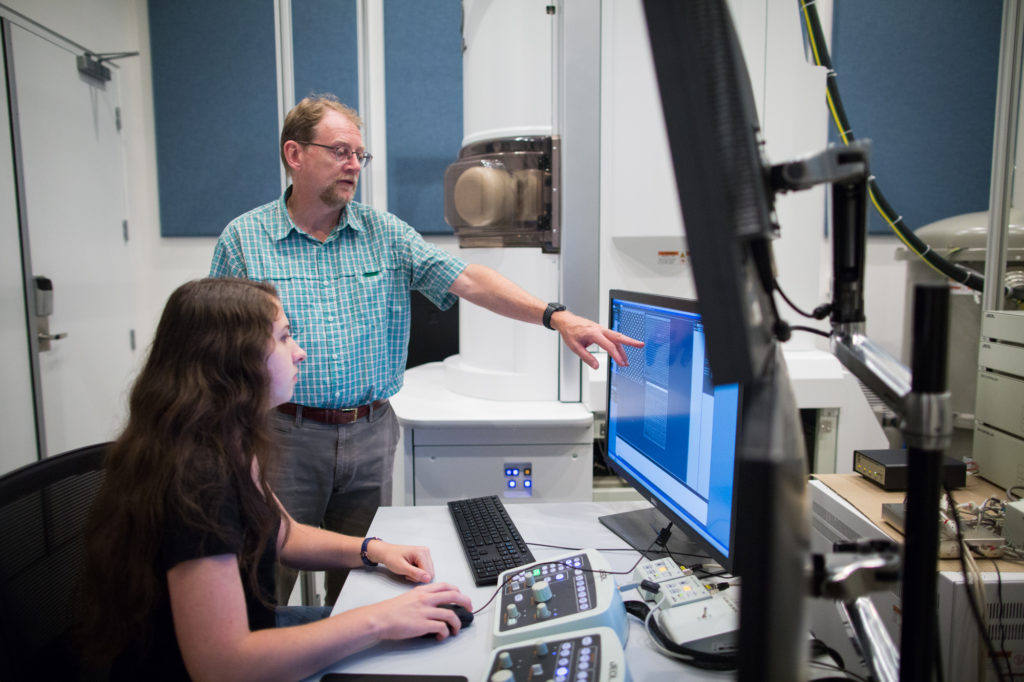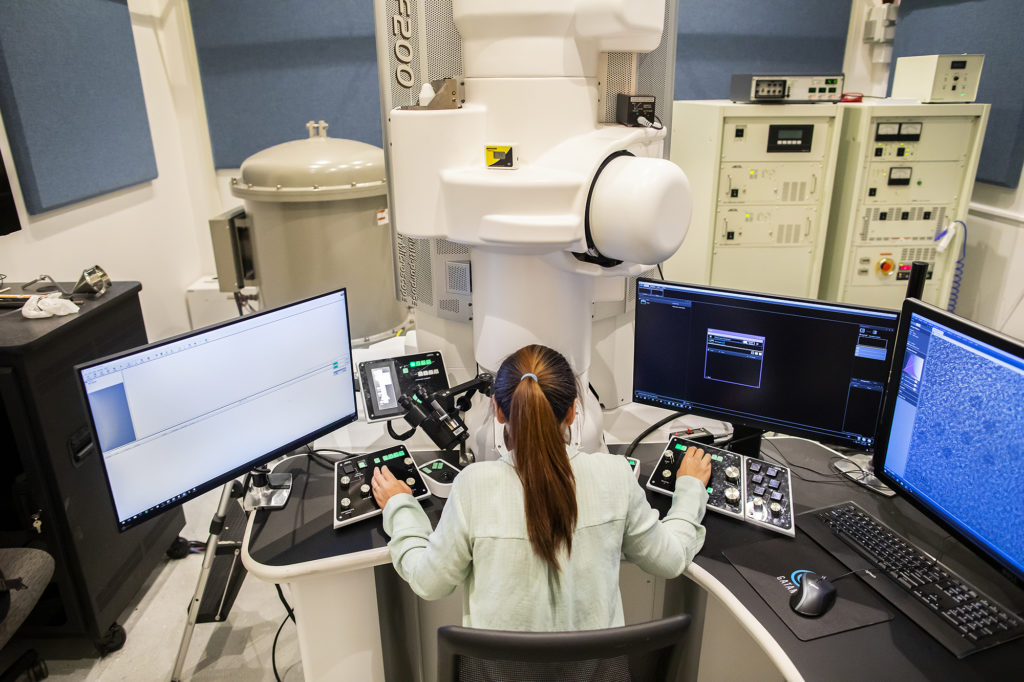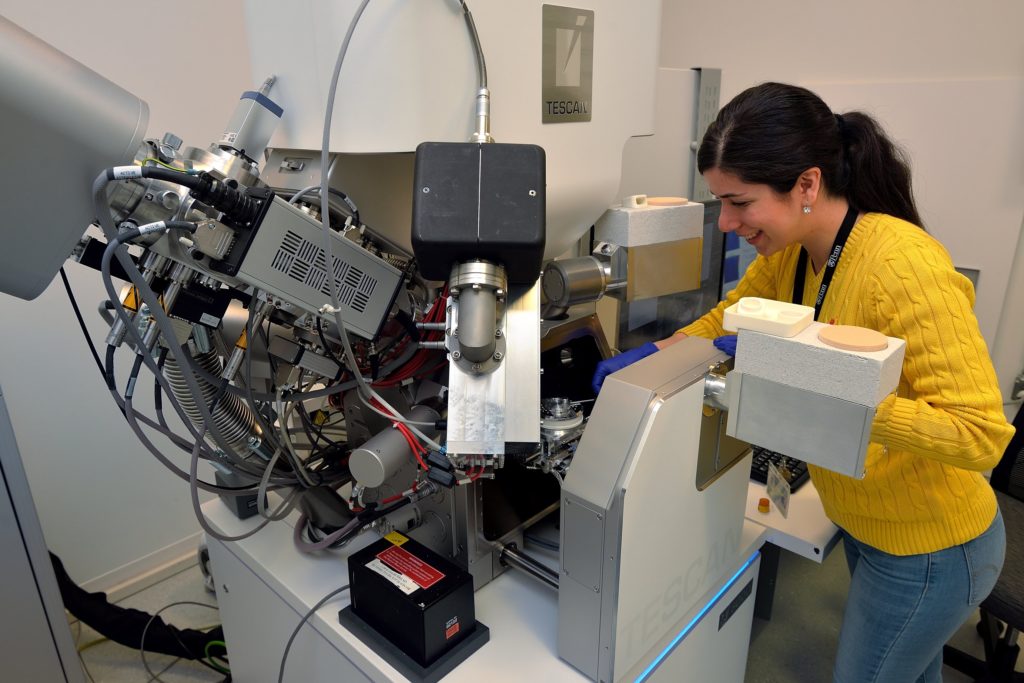| |
Our research utilizes the Nanoscale Characterization Facility at the Singh Center for Nanotechnology at the University of Pennsylvania.
We are thankful for the support of these facilities by the National Nanotechnology Coordinated Infrastructure (NNCI) network, which is supported by the National Science Foundation (Grant NNCI-1542153) and the Laboratory for Research on the Structure of Matter, the University of Pennsylvania Materials Research Science and Engineering Center (MRSEC) (DMR-1720530).
The scanning / transmission electron microscopes at the Singh Center for Nanotechnology are also the North American Demo site for the JEOL USA Corporation. We are thankful for their cooperation and collaboration.
We also thank the support of Dr. Douglas Yates and Dr. Jamie Ford at the Singh Center.
JEOL NEOARM Aberration-corrected Scanning Transmission Electron Microscope
The JEOL NEOARM is a scanning / transmission electron microscope, equipped with a spherical aberration corrector for the probe-forming optics. This corrector has improved stability and optimizes 5th order aberrations, leading to an as-installed resolution of <0.63Å at 200kV, and a <1.92Å at 30kV. The instrument is a high-brightness cold field emission instrument. It is equipped with two large area energy dispersive x-ray spectrometers that permit rapid atomic-resolution EDS mapping. It is also equipped with a Gatan Image Filter, incorporating DualEELS capability to ensure accurate energy calibration and a K2-IS direct electron detector at the end of the filter. This detector has a detection quantum efficiency that is close to 1.0, and thus allows high sensitivity, leading to the detection of very high energy losses. The detector also allows 2k x 2k image acquisitions at 400 frames/second, and 512k x 2k image acquisitions at 1600 frames/second, making it optimal for in-situ/operando microscopy. This JEOL NEOARM was the first to be installed in the U.S.

JEOL F200 Scanning / Transmission Electron Microscope
The JEOL F200 is a 200kV scanning / transmission electron microscope with a cold field emission source, two large area energy dispersive x-ray spectrometers, and Gatan OneView IS camera for in situ/operando imaging at 30 frames per second. It incorporates STEMx capability.
This instrument is where we conduct many of our in-situ and operando experiments, as it is easy to switch between TEM, STEM, diffraction and spectroscopy modes.

TESCAN S8000X Focused Ion Beam / Scanning Electron Microscope
The TESCAN S8000X is a versatile instrument for the characterization of materials. It combines a plasma-source focused ion beam microscope and a high- resolution (BrightBeam) scanning electron microscope. The FIB microscope is equipped with a Xe+ ion plasma source and will include additional gases in the near future. The Xe plasma can generate a focused beam up to 1 uA, which allows very high milling rates (up to 50X faster than the pior Ga+ ion technology) and does not lead to deliterous ion implantation in the same way that Ga+ ions do. The BrightBeam SEM is a field-free, ultra-high resolution electron microscope whose optics allow improved resolution, even at low energies. This improves imaging of non-conducting samples. The instrument is equipped with advanced analytical capabilities, as well. These include a Time-of-Flight Secondary Ion Mass Spectrometery (ToF-SIMS) that can detect the ions emitted from the sample, allowing chemical characterization. ToF-SIMS is especially useful in detecting light elements, including the discrimination of hydrogen and deuterium. An Energy Dispersive x-ray spectrometer allows for additional, complementary chemical characterization. The S8000X is also equipped with a cryogenic stage and a sample transfer loadlock, allowing work down to -160 C or introduction of frozen samples into the tool to be milled. A cryogenic Kleindiek nanomanipulator enables users to interact with the sample in-situ as well as lift-out frozen sections for subsequent TEM analysis.
This instrument was purchased with support from a National Science Foundations’ Major Research Instrumentation grant (NSF MRI #1828545). Additional support from the Laboratory for Research on the Structure of Matter (University of Pennsylvania Materials Research Science and Engineering Center (MRSEC) (DMR-1720530).


